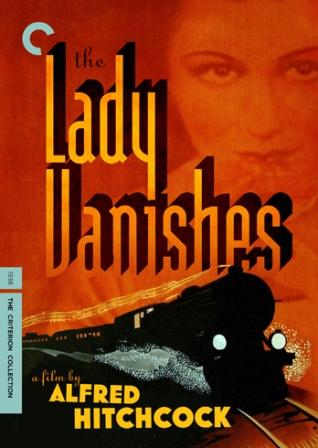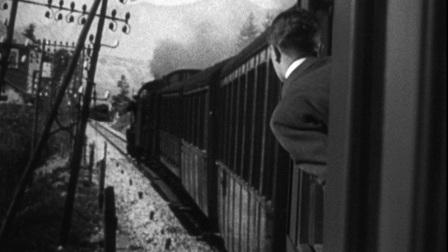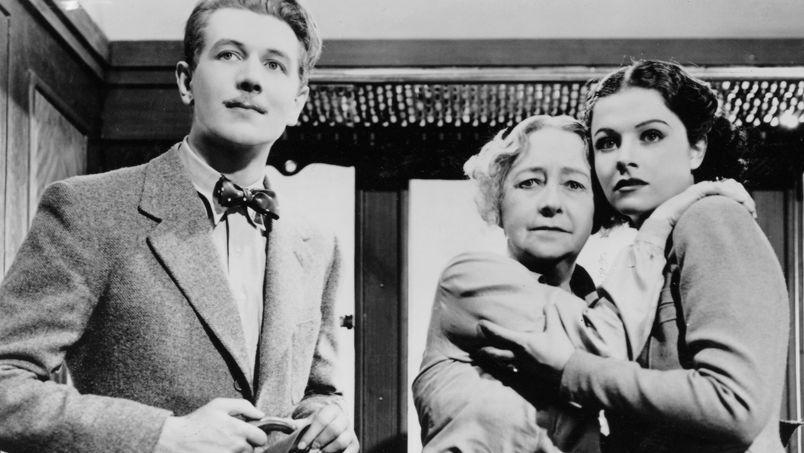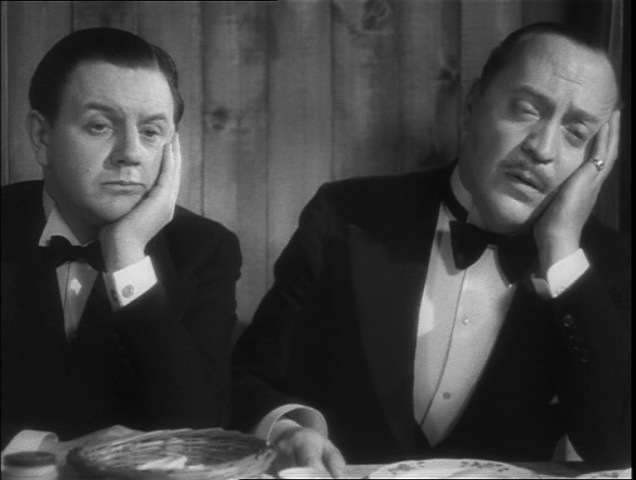When we talk about suspense stories on a train,the 1974 film Murder on the Orient Express directed by famous director Sydney Lumet came to many people’s mind first.As the master of suspense,Alfred Hitchcock loves choosing trains as the location where the story unfolds,be it the interesting opening sequence in Strangers on a Train,or the erotic ending in North by Northwest.However,it is his early British masterpiece The Lady Vanishes that qualifies the most quintessential Hitchcock train movie,or even his best work before he went to Hollywood.
The Story
On a train through Europe, Iris Henderson(Margaret Lockwood) meets the kindly old woman Miss Froy(Dame May Whitty), and they meet several other passengers over the course of their conversation. Iris later wakes up from a nap to discover that Miss Froy is nowhere to be found, and none of the people they met seem to have any recollection of her. A psychiatrist on the train suggests that Miss Froy never existed: Iris was bumped on the head before boarding, and the conversation may have only taken place in her head. However, Iris is certain that something more sinister is going on, and teams up with another acquaintance, the musician Gilbert(Michael Redgrave), to find her before the train reaches its destination…
The film script is adapted from Ethel Lina White’s story The Wheel Spins by Sidney Gilliat and and Frank Launder,who worked together again in Carol Reed’s 1940 thriller Night Train to Munich(which also starring Margaret Lockwood,Basil Radford Naunton Wayneand and is available in Criterion Collection).Their contribution to the film is enormous,considering the fact that this is the only Hitchcock film which mix the ingredients of humor,suspense and romance perfectly,and the dialogues are regarded to be the wittiest in all Hitch films.They also add two comic British characters as a pair which is not in the original story,they turned out to be the most popular characters in the film after its first theatrical release in 1938,I will talk about them later.
Director Alfred Hitchcock also participates in the creative process of screenplay adaption.He asked the writers to change the opening of the film and extend the last scene,which proved to be some brilliant decisions.You will know what I mean after watching the picture.
The Suspense
Even in the early stage of his career,the way Hitch built the suspense is mature and masterful,also the Ethel Lina White’s story helped a lot by always pushing the plot to the verge of impossibility.Let’s focus on the central plot,the lady( Miss Froy) vanishes,to analyse how the master of suspense created something magic.
Sequence one: Before the lady vanishes.
Iris and Miss Froy sit in opposite seats in the same carriage,along with them in the carriage are four total strangers whose first language are not English.They go to the cafeteria together,have some tea and chat a little bit,during the chatting process,one of the funny British pair passed Miss Froy some sugar cubes.After returning to the carriage,Miss Froy starts reading and Iris falls asleep.
Sequence two: The lady vanishes.
The camera moves out of the train and shoots the railroad to display the passage of time,when it goes back to Iris,she wakes up and finds the opposite seat empty.She anxiously search for Miss Froy but can’t find her anywhere on the train.The more surprising fact for her and we audience is that all the people in her carriage deny the existence of Miss Froy,even the husband who was stumbled over by Miss Froy refuse to be the witness of her appearance on the train.The suspense here is at its highest level in the whole film,audiences’ beliefs are shaken,should we trust our eyes? or we all felt Iris’ hallucination? Which is real? If you are a big Hitch fan,you know things ain’t that simple,there are something tricky here,but where is Miss Froy if she really disappears? The suspense goes on.
Sequence three: After the lady vanishes.
The search begins,Iris has to team up with Gilbert,the guy who annoyed her in the hotel room,because he is the only one who trusts her.One after another,we have more clues.The conversations between husband and his wife reveal the real motive of his denial of seeing Miss Froy on the train,he wants to stay out of the trouble.The nun who takes care of Dr. Hartz’s new patient carelessly gives out her true identity by not covering his high heels.Then there is a brilliant scene which pulls the audiences back to what they have seen in previous scenes,Iris and Gilbert both give up and have a drink in the cafeteria,we see the name “FROY” written by Miss Froy’s fingers on the window,but the two leading roles ignore it.We desperately want them to take a look at the window,but they keep on talking and talking,finally Iris sees the name but Gilbert doesn’t because the steam “washes it off”.So until now,we are sure that Miss Froy did disappear,but Iris is still the only one who knows the fact and loses the evidence in a flash.There must be a second round search,both for the evidence and Miss Froy.The story has just began.I will stop here and leave some spaces for your imaginations,but the three sequences above are the best part of the film in my mind,a textbook of creating great suspense.
The Characters and Performances
This film offers both Margaret Lockwood and Michael Redgrave their best role in their actor career.Before The Lady Vanishes,Margaret Lockwood was already recognized as an intelligent and lively girl on the big screen,the Iris Henderson suits her perfectly.However,this is only Michael Redgrave’s first role in films,but his charisma and superb performance in this film instantly won him fame worldwide.
The scene-stealing cricket-loving comic characters Charters and Caldicott are played by famous British actors Basil Radford and Naunton Wayne,the relations between these two characters are the most natural and intimate one in the film,which intrigues the discussion that if they are gay or not.Basil Radford and Naunton Wayne’s style of performance remind audiences of the hilarious pair Laurel and Hardy,without these two characters,the film can never be this humorous.
They proved popular with audiences and returned in the Gilliat-and-Launder films Night Train to Munich and Millions Like Us (1943), and in the BBC radio serials Crook’s Tour (1941, made into a film later that year and is included in the extra disc in the Criterion package) and Secret Mission 609 (1942).
The Ingenious Hitch
At that time,British cinema was overshadowed by those Hollywood movies,the industry lacked originality,filmmakers could only imitate Hollywood B-movies.But the great Hitch changed all these single handedly by inventing a new genre called thriller,so when people talked about thrillers,they were referring to a certain kind of film that features a suspense story with the Hitchcock touch. Before he made The Lady Vanishes,the British newspaper already called him the greatest film director in the world,but his studio didn’t treat him like one.This film,for instance,Hitch only got a coach as the whole set for the entire movie,but the brilliant use of light and transparency not only eliminated the limitation but also created a sense of moving train so the audiences couldn’t feel anything unnatural.
This film proves two things in a great director:
1.One can extend the possibilities of a certain genre
2.With the limitation of production resource and budget,one can still achieve high quality cinema
After The Lady Vanishes,Hitch made his last film in Britain,Jamaica Inn starring Charles Laughton,then went to Hollywood and reached his peak there.But this film will forever remain as his best work in his British period and an excellent display of the Hitchcock touch.
Read other in this Criterion Gems Series



